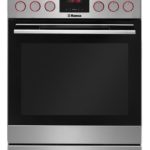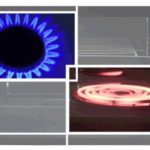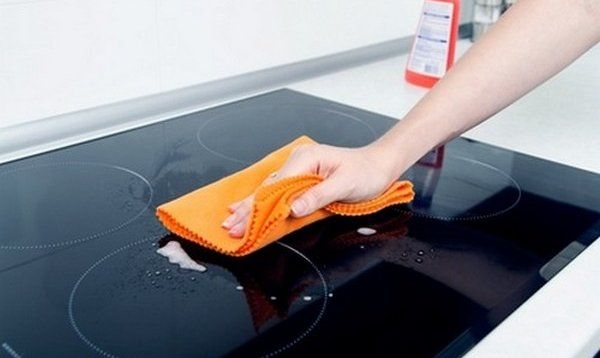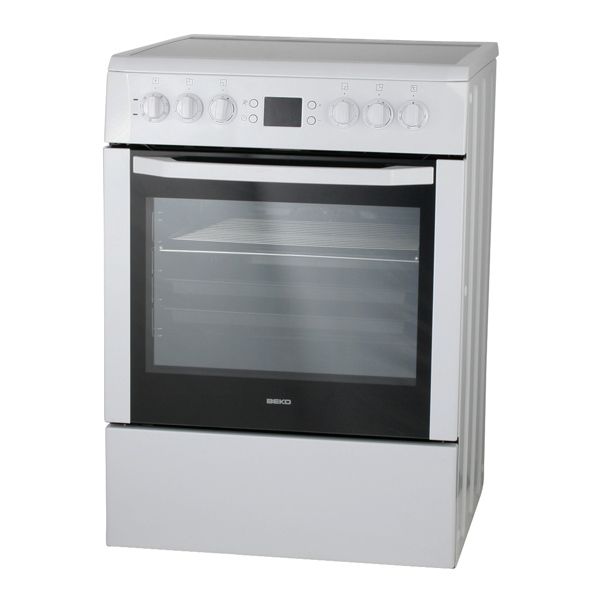Which hob is better, induction or glass ceramics?
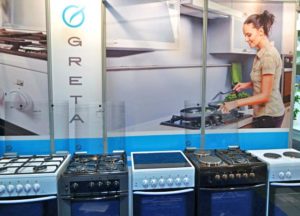 Which hob is better - glass-ceramic or induction? What are their differences, advantages and disadvantages? Which stove to choose when buying household appliances? This is what our article will be about.
Which hob is better - glass-ceramic or induction? What are their differences, advantages and disadvantages? Which stove to choose when buying household appliances? This is what our article will be about.
The content of the article
Induction cooker
Key difference: it is not the work surface that heats up, but only the dishes placed on it. Also, many housewives like the automation of processes: heating begins after a pan is placed on the stove, and stops after it is removed. This feature looks extremely attractive, especially if you have experience using conventional electric or gas stoves. With this option, there is no need to systematically scrub away grease and stains from levers and handles.
Important! An electromagnetic coil acts as a heating element. It creates a magnetic field that produces high-frequency currents, which heat the dishes.
Advantages
Reasons for purchasing induction:
- touching the burner does not cause thermal burns;
- It is easy to collect spilled bulk products from the surface (and at the same time they will not leave scratches);
- functionality (the list of options can consist of several dozen items);
- impact resistance (careless movement or falling dishes will not lead to failure of the device);
- it is possible to set any temperature;
- extended list of cooking modes;
- fat does not eat into the surface;
- in working condition, it practically does not dry out the air in the kitchen;
- sophisticated overheating protection system;
- the burners heat up very quickly (the speed is comparable to advanced gas stoves);
- low electricity consumption (compared to shadow models);
- It takes 2–3 minutes to boil a liter of water.
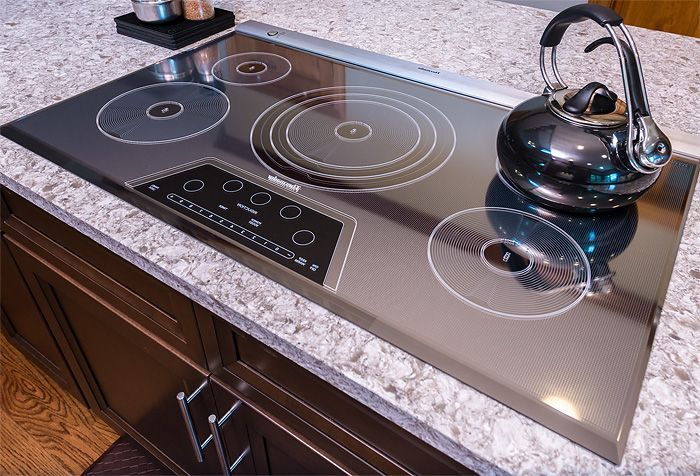
Families with children will like the automatic locking of the entire hob in case of incorrect setting of the mode or repeated aimless pressure. However, this same function sometimes acts as a “minus”. Housewives who bought induction for the first time suffer especially greatly from it at the initial stage of use.
Important! The panel is so smart that it can distinguish between cooking utensils and a kitchen utensil accidentally left on the stove. For example, from a ladle. The device will not turn on under its weight.
Flaws
Induction cannot be called perfect. Most often, the purchase of slabs of this type is stopped by their high cost. In addition to price, the following nuances may influence the decision:
- the need to use specialized cookware (ordinary pots and pans will not heat up; products with ferromagnetic properties are required);
- high cost of suitable utensils;
- burners fail quite quickly (proper operation and compliance with all safety measures do not save);
- requires increased care during installation;
- has a strong negative effect on people with pacemakers (and devices similar in operating principle);
- you will have to choose a place (induction should not be located next to the refrigerator or dishwasher);
- It makes noise during operation (the clarity of the manifestation depends on the specific model; some expensive devices do not have this drawback at all).
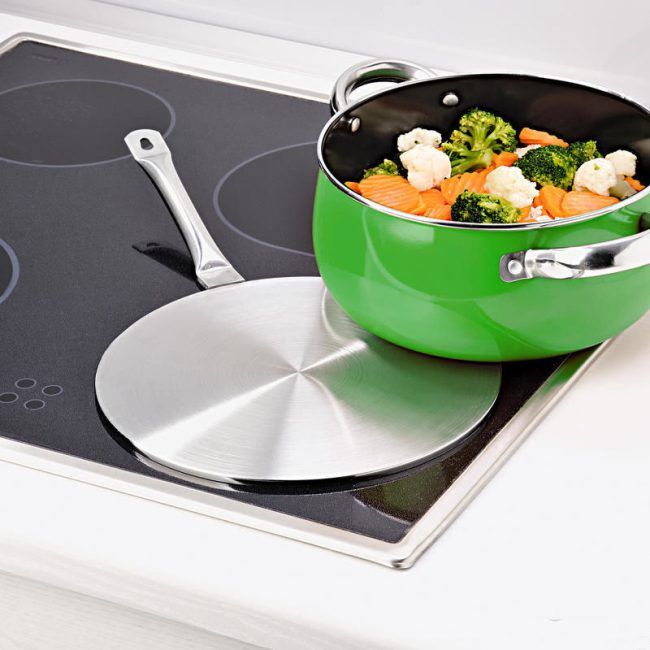
Note! In a desperate situation, it is permissible to use glassware. However, it will heat up very poorly.
If you look closely at the list of “cons”, it’s easy to understand that we are not solving only 1 point. It concerns the health of people with pacemakers. The remaining points can be softened if desired.
Glass ceramics
Unlike induction models, the principle of heat transfer works here. First, the work surface heats up. Increasing its temperature leads to heating of the cookware. Because of this, there is a risk of thermal burns during cooking.
The heating element also does not match. According to this criterion, glass-ceramic plates of the tape, halogen and spiral types are distinguished.
Advantages
"Pros" of glass-ceramic technology:
- the device can easily withstand critically high temperatures (up to 600 degrees);
- rapid cooling of the heating surface;
- the ability to regulate the diameter of the heating zone (adjusting it to the size of the pot or frying pan);
- withstands very heavy weight;
- a well-thought-out system of protection against unauthorized access to switching modes (children will not be able to “wind up” the stove);
- relatively low cost;
- works absolutely silently;
- Cookware for glass ceramics costs less than for induction.
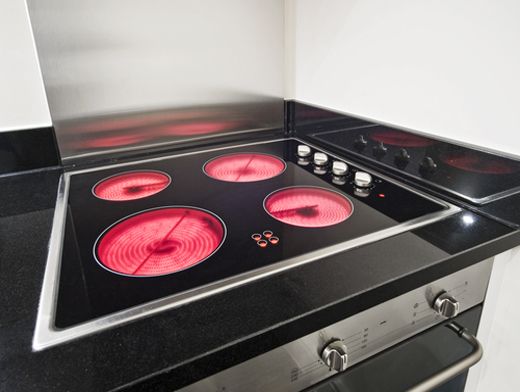
The last item on the list will allow you to save a decent amount. The benefit is also visible in relation to the cost of the slab itself. Glass-ceramic technology will cost less than induction. Moreover, the difference in the amount of the check can reach tens of thousands of rubles.
Important! If you wish, you can find a model that is compatible with cookware made from different materials. However, you will have to pay a lot of money for this know-how. Therefore, today it will still be easier to buy frying pans and pots with a flat bottom.
Flaws
The main “disadvantage”: the inability to use the stove in the presence of slight dirt. This can lead to failure of the working surface. And while single people and small families can easily put up with this factor, housewives who prepare several dishes a day will eventually begin to experience irritation from the need to constantly wipe the tiles.
Moreover, the cleaning process itself is somewhat difficult. Care should be taken in selecting funds. Indiscriminate use of non-specialized gels and powders will lead to rust and scratches.

Other controversial qualities:
- improperly collected cereals and the use of powdered cleaning products can lead to deep scratches;
- complexity of care (relative to induction models);
- risk of burns;
- dropping a sharp object may cause damage;
- it takes 5–7 minutes to heat 1 liter of water (2–3 times longer when compared with induction);
- less automation of processes (compared to induction cookers);
- glass ceramics spend more electricity on cooking;
Conclusion
When choosing between ceramic and induction hobs, everything depends on financial capabilities and the expected activity of using the hob. Wealthy people who have a large family and have to cook several dishes every day should opt for the induction model. In this case, it will be necessary to allocate funds from the budget for updating the dishes; you should not forget about this expense item.
If urgency is not a priority and you don’t want to spend extra money, then you should buy a glass-ceramic device. Those who definitely will not use unusual functions and options when cooking should also take a closer look at this option. In fact, housewives resort to them extremely rarely, but their presence seriously affects the cost of the stove.

